Basic kidney stone diet:
Almost all kidney stone patients will benefit from simple dietary changes which include increasing their fluid intake and limiting certain types of food. Together, these simple steps have been shown to decrease the risk of forming another stone by 50% or more and will also improve overall health and well-being. A handout outlining these steps is available for download below. For more detailed information on dietary prevention read on further.
A high fluid intake is one of the most important cornerstones of kidney stone dietary prevention. A sufficiently dilute urine will prevent the individual chemical components of stones from becoming concentrated enough to precipitate out of solution, keeping them instead in their dissolved state. A high urine output also may reduce stone from forming through “flushing” out of stone components and prevention of urine stagnation. In addition to stone benefits, increased water intake has been shown to have a multitude of other benefits, including improved alertness, better skin appearance, enhanced physical performance, reduced constipation, and enhanced weight loss.
The average daily urine output of normal healthy adults is 1.2 liters a day, ranging from 1 to 2 liters in most individuals and varying with body weight and gender. In stone formers, however, a higher daily urine output is required for stone prevention and achieving a daily volume of at least 2.0 to 2.5 liters a day can significantly reduce the recurrence of future stones. In a randomized study of stone formers who were given specific instructions to increase their fluid intake compared to stone formers told to not change their diet, those given specific fluid instructions achieved a high urine output of 2.6 liters a day versus 1.0 liters a day in those not given dietary instructions. Over a period of five years, the high fluid intake group was half as likely to form new stones as compared to the normal fluid intake group (Borghi et al, J Urol 1996).
We recommend that most stone formers increase their daily fluid intake by one liter (an additional two 16 oz water bottles or two tall glasses a day) in order to achieve a urine output of 2.5 liters a day. (One liter = 4.2 8-oz glasses or 34 oz).Alternatively, a 24 hour urine collection can be performed to guide fluid intake to achieve 2.5 liters of urine output in a specific patient.
Type of fluid intake
The type of fluid intake is generally less important that the total intake. While drinking water is our preferred recommendation because it is inexpensive and contains no calories, for stone patients who do not enjoy drinking water, any beverage will be beneficial in reducing stone risk.
Contrary to popular belief, studies have found that an increased intake of tea, coffee, and alcoholic beverage actually reduces the risk of stones, possibly because of an associated increase in urine output (Curhan et al, Am J of Epidemiology, 1996). While tea contains high levels of oxalate, this does not appear to result in increased stone formation for the reasons discussed below in our discussion on oxalate.
Soda intake (including colas) and milk intake also do not appear to increase the risk of stones.
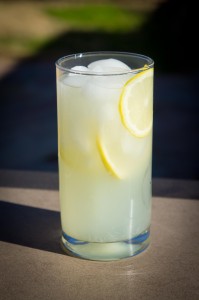 Citrus juices, including lemon juice and orange juice, contain citrate, which acts as a stone inhibitor for calcium based stones. Citrate seems to do this by binding calcium, making it unavailable to combine with oxalate or phosphate: a necessary first step in the formation of stones. Citrate also seems to make it more difficult for stones to grow once they’ve formed.
Citrus juices, including lemon juice and orange juice, contain citrate, which acts as a stone inhibitor for calcium based stones. Citrate seems to do this by binding calcium, making it unavailable to combine with oxalate or phosphate: a necessary first step in the formation of stones. Citrate also seems to make it more difficult for stones to grow once they’ve formed.
Drinking citrus juice in the form of concentrated lemon juice mixed with water has been shown to effectively increase urinary citrate levels and reduce urinary calcium levels, both of which will reduce stone risk. Orange juice will similarly increase urinary citrate levels. However, orange juice appears to also increase urinary oxalate levels (a stone promoter). Other sources of citrate, including grapefruit juice, have had less research completed confirming their beneficial effects on urinary citrate levels. Therefore, lemon juice is typically favored over other citrus juices as a natural method to increase urinary citrate levels. Many patients find drinking citrus juices to be an attractive alternative to pharmaceutical treatment with potassium citrate.
We recommend that stone formers consider supplementing their daily fluid intake with a mixture of 60 ml of concentrated lemon juice in one liter of water to increase their urinary citrate levels.
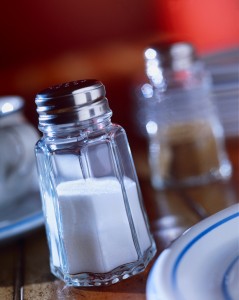 A high sodium intake increases the risk of stone formation by increasing calcium levels and decreasing citrate (a stone inhibitor) levels in urine. Additionally, high sodium intake will impair the ability of medications such as hydrochlorothiazide to effectively reduce calcium levels in urine. A study of stone formers who were kept on a strict diet with a maximum daily sodium intake of 50 mmol (1200 mg) in addition to a reduced protein diet demonstrated that the low sodium diet was effective in reducing stone recurrence by 50% as compared to the low calcium diet.
A high sodium intake increases the risk of stone formation by increasing calcium levels and decreasing citrate (a stone inhibitor) levels in urine. Additionally, high sodium intake will impair the ability of medications such as hydrochlorothiazide to effectively reduce calcium levels in urine. A study of stone formers who were kept on a strict diet with a maximum daily sodium intake of 50 mmol (1200 mg) in addition to a reduced protein diet demonstrated that the low sodium diet was effective in reducing stone recurrence by 50% as compared to the low calcium diet.
We recommend that stone formers aim to follow the FDA’s guideline of limiting salt intake to 2300 mg of sodium a day in the general population and 1500 mg of sodium a day in those with hypertension, African Americans, or middle aged and older adults. 2300 mg is equivalent to about 1 teaspoon of table salt.
The best way to determine the salt content of your food is to read the nutrition label. Processed foods tend to contain higher amounts of salt. Choose low sodium options whenever possible.
- 1 cup of canned chicken noodle soup contains 870 mg of sodium
- A fried chicken drumstick contains 310 mg of sodium
- A serving of shrimp contains 240 mg of sodium
- 2 slices of white bread contains 200 mg of sodium
- 15 potato chips contain 180 mg of sodium
- 1 container of strawberry yogurt contains 85 mg of sodium
- 1 tomato contains 20 mg of sodium
- 1 apple contains 0 mg of sodium
In addition to lowering the risk of stones, a low sodium intake helps to control or prevent high blood pressure, which can lead to heart disease, stroke, heart failure, and kidney disease.
Animal protein in meat products increases the risk of stone by increasing calcium, oxalate, and uric acid levels in urine. All three of these changes increase the risk of stones. In studies comparing high meat eaters versus low meat eaters, high meat eaters were found to be at increased risk of forming stones. A randomized study of stone formers restricted to a low meat intake of 52 grams a day (equivalent to 8 0z of beef) in combination with sodium restriction found that the combination reduced stone recurrence by 50% compared to calcium restriction alone (Borghi et al, NEJM 2002).
We recommend that most stone formers try to reduce their meat intake to 6 oz a day. This includes all types of meat: beef, pork, poultry, and seafood.
The USDA recommends a daily allowance of 5-6 oz of protein intake among adults. They also recommend choosing non-meat protein foods such as nuts and beans instead of meat sources. Protein from non-meat sources does not appear to increase the risk of stones.
- A small steak contains about 3-4 oz of protein.
- A quarter pound hamburger with cheese contains 4 oz of protein.
- A chicken breast contains about 5 oz of protein, a chicken thigh about 2.5 oz, a chicken drumstick about 1.5 oz.
- One 5 oz can of tuna contains 5 oz of protein.
- 1 medium egg contains 1 oz of protein.
Lowering your animal protein intake and eating more fruits and vegetables also benefits your overall health by limiting the amount of saturated fats and cholesterol in your diet. This helps to reduce your risk of cardiovascular disease.
While oxalate plays an important role in the development of calcium oxalate stones, dietary restriction does not appear to be effective in reducing the risk of stones in the majority of patients. About 40% of urinary oxalate comes from dietary sources while the remainder is naturally made within the liver. Therefore, reducing oxalate dietary intake does not always have a significant impact on total urinary oxalate levels.
Oxalate is found in many vegetable and fruits, including many healthy dietary choices often making it difficult to achieve a low oxalate diet. Because of these issues, oxalate avoidance is beneficial primarily in those individuals with specific abnormalities that lead to high oxalate urinary levels.
We recommend that most stone formers should maintain a normal oxalate intake without the need for oxalate restriction. High oxalate intake should be avoided in individuals found to have high urinary oxalate levels on metabolic evaluation. Oxalate restriction may be beneficial in certain individuals with high urinary oxalate levels.
Oxalate rich foods
- Tea (black)
- Spinach
- Mustard greens
- Chard
- Beets
- Rhubarb
- Okra
- Berries
- Chocolate
- Nuts
- Sweet potatoes
Kidney stone formers often question whether to stop or reduce their calcium intake. Despite the fact that calcium is a major component of 75% of stones, excessive calcium intake is very rarely the cause of stone formation. In fact, several studies have shown that restricting calcium intake in most stone formers actually increases the number of stones they develop. This appears to happen because when less calcium is ingested, it becomes easier for oxalate (which normally binds with calcium in the gut) to be absorbed. Higher levels of oxalate in the urine then lead to an increase in stone risk. Calcium obtained from dietary sources appears to be better than calcium from supplements in regards to lowering stone risk because supplements can actually increase your risk of stones slightly (by 17%) while dietary calcium intake is instead associated with lower stone risk. If you need to take supplements, taking them during meals appears to be better in terms of stone risk.
We recommend that stone formers maintain a normal calcium intake, preferably from dietary sources. Female stone formers taking calcium supplementation to prevent osteoporosis experience a slightly increased risk of stones (17%) which needs to be balanced against their risk of osteoporosis.
For more on calcium intake and stones, see: Should I stop my calcium?
Editors note: Oxalate and calcium sections updated on 5/23/12 to reflect information presented at the 2012 American Urological Association Meeting.
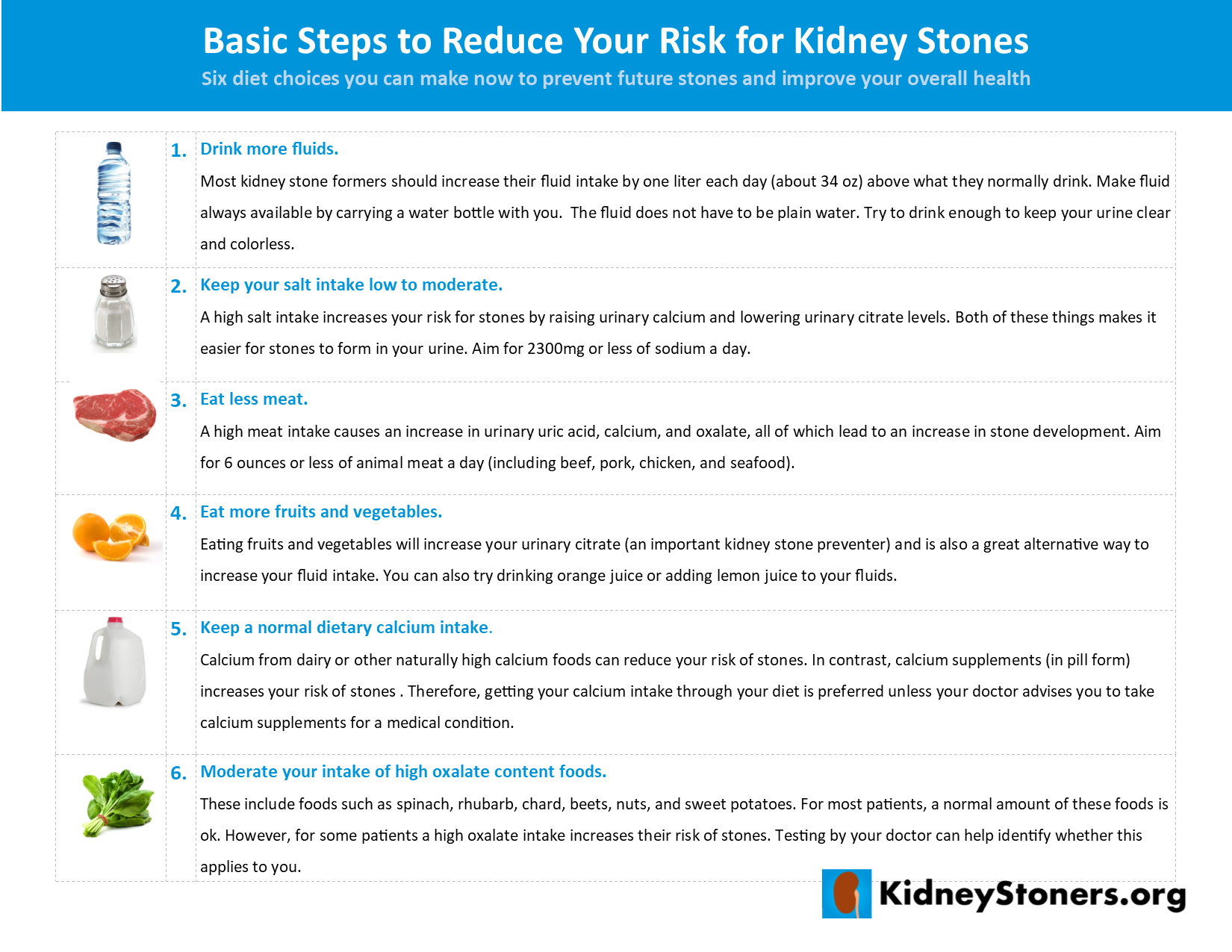
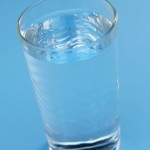
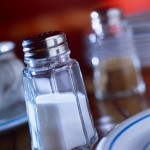
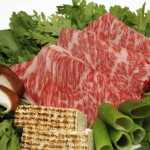
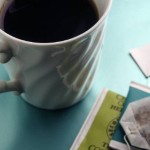
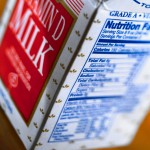
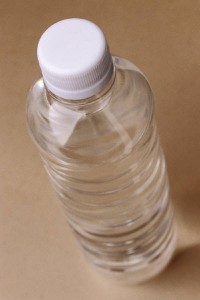
I have a high tolerance for pain, but an abcessed tooth and kidney stones make me miserable.
My fist kidney stone formed while on the Atkins diet (high protein, nuts, salt and low carbs). My favorite Atkins snack was salted almonds.
Shortly after abondoning the Atkins diet (I rather be obese than suffer another kidney stone attack!), I developed slighly elevated blood pressure. My MD presribed Lisinopril/HCTZ to reduce BP. Subsequently another MD advised me that the BP meds reduce kidney stone formation. I know that reducing weight will reduce BP. If that happens, I may continue taking the BP meds just to control the kidney stones.
I wouldn’t wish kidney stones on my worst enemy!
I have been watching this post and no one mentioned that Homeopathy can help.I myself has helped more than hundred cases in my office..
WHAT SHOULD I EAT 🙁 NO CHICKEN NO MEAT NO MILK NO TEA NO PROTEIN NO CHOCOLATE . WHAT? 🙁 I WORKOUT AND I NEED TO EAT SOMETHING
Dietary recommendations given to stone formers can sometimes be confusing or seem to conflict with healthy eating advice. To keep things simple, what I recommend is to drink plenty of fluids, moderate your meat protein intake (ideally 5-6 oz or less a day), moderate your sodium intake (less than 2300 mg a day), keep a normal dietary calcium intake (you should not cut out dairy products), and keep fruit and vegetables a part of your diet. Essentially healthy eating with more water. The amounts for protein and sodium recommended above are those given for all adults by the FDA and USDA, they’re not for just stone formers. I don’t recommend cutting out oxalate intake (which is in tea and chocolate) unless you doctor finds high oxalate levels in your urine as a contributor to your stones. Specifically for tea, the best evidence we have is that drinking tea may instead actually reduce your risk of stones…and don’t cut out your milk intake, this might actually increase your risk of stones- higher dietary calcium intake was associated with a lower risk of stones in several studies.
I have had kidneystones. For two years I went to a urologist every six months and had a KUB. But all they could say was, they were not sure if had a stone or not, my bowel was in the way. Well it was time for a colonoscopy the prep clears the bowel. So I asked my urologist for a referal for a KUB that same day. They agreed and finally they had a clear view of the kidneys. So maybe something to talk to yourt urologist about if you are scheduled for a colonoscopy.
Possible good news on the oxalate front for those that have high urine oxalate levels. Looks like there is a gut bacteria that is supposed to degrade oxalate in the intestines. http://www.ncbi.nlm.nih.gov/pubmed/20602988
Hopefully we can get a proper probiotic to help those with calc/oxalate stone forming.
I found another study on the same bacteria that showed that most children have he bacteria in the gut, but up to 60% of adults lose it after childhood.
Thank you so much for providing reasons for your do’s and don’ts as well as the research to back it up. I’m so happy to know that I can keep eating the same healthy foods I’ve always eaten. Drinking more water, reducing salt and meat is something I can easily do.
We are glad to be able to help! Providing information on the reasons behind medical recommendations, especially stone prevention recommendations, allows you as a patient to make your own decisions about whether to follow them.
Hi. I recently had a stone removed. I am a 45 yr. Old female. I don’t eat cheese, or drink milk. Also, I don’t eat yogurt. Is taking a calcium supplement good enough for calcium intake?
I have 7.8mm calculi in right ureter, what steps must i take ?
I had pain in right lower back, doctor told it is due to weight(85kg) about 45 days back and also told I might have urine infection. I reduced my weight to 78kg(current) and continuing to reduce by walking but pain continues. What should I do?
My weight 3 months back was 90kg.my age is 17
I had a 4 inch by 2 inch staghorne stone removed from my left kidney. It took 3 surgeries the last one Sept 6 2013 and a nephostomytube and bag drain for 3 weeks. I also had an internal stent from kidney to bladder. Worst pain I can remember. I still have back pain and abdomen pain. 90% of the stone was removed there is still a peice left but at this point I do not want to do anything about it.
I have 10mm kidney stone and been taking freshly squeeze lemon juice every morning on empty stomach. Will definitely change my diet to reduce the size of my stone. Will see if condition will improve. Will keep you posted if ever.
i want know how can i know which type of stone i have, in ultrasound shows three stones
in my left kidney of 4mm and 9mm and 4mm in right .
your Dr can test it if you ever pass one that can be captured in a strainer
I had the worst pain of my life. Went to the ER with no help. One attack lasted for 4 hours of pain. Had an ultrasound done. They said nothing to me and let me go home. I ended up the next day suffering for9 hours of pain, which I am a woman and it reminded me of labour pains, but not as bad. Got my results, had a 7mm stone. I still think I have it, not sure if I even passed it. I work out a lot and eat properly. I started drinking lots of water with concentrated lemon juice and I do shots of apple cider vinegar. I say moderation as foods are concerned, but WATER WATER WATER is the key with lots of lemon. Advil too.
My 14 years old cousin kidney stone , and doctors say he size of kidney is reduced ,and might have to remove the kidney. What can help her in this situation?
Thanks.
Just had a 6mm stone removed. I had a stent in for 2 weeks before. All over now but don’t want to go through it again (it made a grown man cry). Thank you for the info on prevention I am now changing my diet and drinking more (water).
I experienced my first stone last Tuesday and I don’t want to go through that again if I can help it. Fortunately I passed it within an hour of the initial pain attack. This is a very helpful site. Not being very accustomed to following such sites I am wanting to know how to get information or answers to a couple of the questions some of the people asked in the “Responses” section, particularly Lucy’s question. I find myself asking the same questions. I would greatly appreciate a response from someone. Thanks
thanks for helping me with tips on the kidney stone diet.
this has been so helpful, ive been reading loads of sites and they say differant stuff very confussing. would like receipes or meal plans
thank you for your time.
stones really hurt dont like them at all
I have passed at least 40 stones in the past 25 years. My doctor recently told me to lower my oxalate intake. I have been reading about them on the internet and am now very confused. Looks like every web site has a different idea about what is OK to eat. I like this site very much. So you will be the one I will follow.
Thank you for all the information.
Please see a Nephrologist as they can put you on medications that will inhibit stone growth. They also advise you as to what to avoid by doing 24 hour urine tests to see what you need to avoid in your diet or to add medication to balance your chemistry in your urine. Then only stones left by previous lithroscopy will grow instead of growing new stones.
Thanks for making this site worth while for me. Sharon
This is great.. I have been putting together some recepies for low oxalate diets. And also just for healthy kidneys. You info has been great. Do you have a long list of low, moderate and high oxalate? Thank you for all your hard work… Bless you for your passion and your spunk to help people.
This is so helpful, am having kidney stone, is really pain-full.
Thanks again
I would really like to see recipes that include low-sodium, low protein diets. Do you know of any websites that offer these?
Hi, You might try the National Kidney Foundation, http://www.kidney.org, or the Mrs. Dash website. Karen
Thanks,your information of kindney stones and how to prevent them is very good and i wish you could send me a detail information of prevention.
Thanx
William
I also have acute osteoporosis, so it is imperitive for me to take fosomax, high amounts of calcium and eat some things that are high in oxidants. I eat no red meat and very little other meats although I eat fish a lot. Is there anything else I should be doing. Thank you
This is so helpful
Thanks again
What about Vitamin D supplements? You mention too much Vitamin D may contribute to problems. How much is too much?
The available research suggests that vitamin D replacement with either dietary or supplements at standard normal doses is likely ok. However, overdoses of vitamin D, called “hypervitaminosis D” can lead to high calcium levels in the blood and urine and among other adverse side effects, can promote stones.
Ref: Leaf, Calcium Kidney Stones, New England Journal of Medicine, 2010